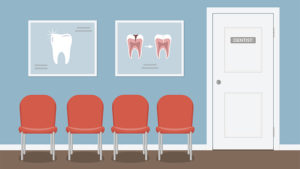
By Heidi Arndt
While many practices rely on new patients to fuel their practices, it is equally important to retain the patients you worked so hard to acquire into your practice. But, have you looked at how well you are maintaining your recall system and patient retention?
By tracking your recall and patient retention rates, you can gain a quick understanding of how well your practice is doing to maintain patients for life. Your Recall Rate shows the percentage of patients seen in hygiene (during an identified time period) who have their next regular hygiene appointment set, whether it be a periodontal maintenance appointment or 3-,4- or 6-month recall appointment.
Questions to ask
When the Recall Rate is below goal, ask the following questions:
- Who is scheduling the next hygiene appointment?
- How are the hygienists doing relative to trend and to others?
- Who are the unscheduled patients? Should they be on the list? There may be patients who are justifiably on the missed patients list. Some patients will have benefits remaining that should be leveraged to facilitate reappointments. Others may not have benefits and may be more difficult to reschedule. Target those most likely to reappoint.
Your retention rate is:
- Retention Rate = (Total Patients from 8 months ago seen by now / Total Patients with an exam from 8 months ago) * 100
The Retention Rate shows the percentage of patients seen within 8 months of their last exam. For example, if 30 exams were completed in January and only 15 of them had been seen by the end of August, the Retention Rate would be 50 percent.
If the Retention Rate is below goal, ask the following questions:
- How are the hygienists doing relative to trend and to others?
- How high is utilization?
(If utilization is high and the Retention Rate is low, there may be an issue with being able to see patients in a timely manner because the hygiene program is overcrowded with patients. More hygiene chairs or days may be needed to balance utilization and retention.)  How is the short-term retention rate compared to the long-term retention rate?
How is the short-term retention rate compared to the long-term retention rate?
(If the short-term retention rate is low and the longterm retention rate is high, that means patients are still coming in, just on a delayed basis. This means there is production being lost because patients are being pushed out beyond the standard recare timeline. Focus efforts on reactivating patients if both rates are low.- What is the Recall Rate from 8 months ago?
(If it is low, the Retention Rate may be low as well. If it is high, focus efforts on reactivating patients.)

